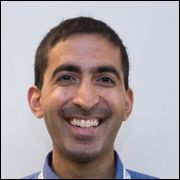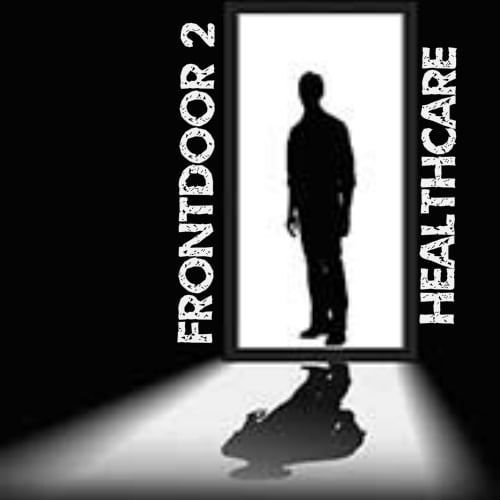As we continue to develop educational models within medicine, old paradigms need to be examined and discussed. In a recent post on the ICENet Blog, Dr. Lynfa Stroud discussed perceptions on service and education in residency training programs. Dr. Kaif Pardhan (@kaifpardhan), a staff Emergency Physician at the University of Toronto, and recent FRCP graduate, provides an counterpoint and some further considerations to Dr. Stroud’s arguments.
Service and Education: Two separate issues?
Dr. Stroud raises an interesting point as it relates to service and education.
The issue of balance between service and education was deemed important enough to medical educators to be included in their accreditation standards, recognizing that many educational objectives may only be met through direct patient care [cite num=”1″]. Similarly, the Council of Ontario Faculties of Medicine (COFM) has also developed Service to Education Integration Principles [cite num=”2″] which highlights that these two concepts are inextricably linked, but that one should not come at the expense of the other. However, I have heard many physicians reflecting on whether this remains an issue in the medical education world.
Dr. Sanfilippo, undergraduate dean at Queen’s University, provides a clear definition of three domains of activity for medical trainees:
- Purely education (e.g. teaching rounds, lectures).
- Clinical service and education overlap (e.g. supervised clinical service in the OR, clinic or ED).
- Clinical service that is minimally supervised or performed independently, based on the trainee’s level and competence [cite num=”3″]. Under the competency based medical education framework, this is known as an Entrustable Professional Activity (EPA) [cite num=”4″].
Certainly, in some postgraduate programs the pendulum has swung to the point where the amount of time residents are spending in some clinical settings is being restricted due to the educational requirements of their program. This may take the form of didactic, teaching or a return to their home service to provide equally important clinical service in a different environment.
However, the converse is also definitively true, where the clinical service restricts the ability of residents to achieve their educational objectives, both inside and outside the clinical environment. This includes, but certainly isn’t limited to, rotations and programs that restrict their residents from participating in the formal academic curriculum, reducing or eliminating components of the academic curriculum so that residents are able to provide more service or restricting resident elective time so that clinical services can be covered.
Resident perspectives
Residents, similar to the second year medical students Dr. Stroud uses in her example, want to provide clinical service and patient care and are acutely aware that the majority of learning takes place in the work environment. Residents are employees of the hospitals across Canada and are paid for the valuable clinical service they provide to their patients. However, much like all physicians, trainees are under increasing pressures to accomplish more work with less time available to them. In the face of increasing patient volumes, acuity and complexity, the certification colleges’ and postgraduate institutions’ requirements are concurrently increasing with the rollout of the Triple C Curriculum, CanMEDS 2015 and Competence By Design. These new frameworks include increased non-clinical requirements including portfolios (e.g. Field Notes) [cite num=”5″], quality improvement work and integrating the new Leader competencies [cite num=”6″].
“Scut”: a dirty word
The perennial issue of “scut” is an interesting component of our hidden curriculum and a misnomer. This pejorative term, perpetuated by both staff physicians and residents, results in the discussion being about the value of the work, regardless of who is performing it. The definition of “scut” can vary substantially, depending on whom you ask, when they trained, where they trained or even what rotation a resident happens to be on [cite num=”7″]. Dr. Stroud identifies prescriptions, home-care and finding old reports being referred to as “scut” (tasks that I almost never hear about), whereas redundant medication reconciliation forms, faxing and photocopying and managing non-critical blood-work and bowel regimens at 3 am top my list. However, regardless of what the “scut” is, we all know how important and vital this work is to the care of our patients. Residents have long been a comparatively inexpensive and easily accessible resource for a broad range of hospital services. The real issue isn’t about the value of this work, rather, the issue is whether residents are providing services, simply because they are available, such that it interferes with their ability to provide patient care in a safe, efficient and effective manner.
The service and education conversation is more important than ever, particularly given that we have had remarkable success in achieving optimal integration in some disciplines and face significant challenges in others. It is also clear that where service and education overlap and diverge is in the eye of the beholder [cite num=”7″][cite num=”8″][cite num=”9″][cite num=”10″]. There must be an honest dialogue both among educators and between them and residents: sometimes the clinical work residents do is just that: work, with no specific educational benefit. However, we must ensure that this work does not prevent residents from becoming good independent practitioners by forcing them to miss critical components of their education, both within or outside the clinical environment. We should continue to focus on our shared goals of balancing the ever increasing academic requirements that residents face, training excellent physicians that feel competent and confident to succeed as independent practitioners and, most importantly, ensuring residents are able to provide excellent patient care during their training and in practice.
Peer review: This post was reviewed by Dr. Shahbaz Syed (@DDxDino) and Dr. Edmond Kwok (@eddeestyle)
[bg_faq_start]References
- Royal College of Physicians and Surgeons of Canada. General Standards Applicable to All Residency Programs B Standards. 2011. Accessed March 20, 2016.
- Council of Ontario Faculties of Medicine. PGE COFM Service to Education Integration Principles. 2015. Accessed March 16, 2016
- Sanfilippo AJ. Is “Apprenticeship” Dead? The Case for clinical service in medical education. 2016. Accessed March 20, 2016
- Royal College of Physicians and Surgeons. Competence by Design: Understanding milestones and EPAs. 2016. Accessed March 20, 2016
- College of Family Physicians of Canada. Triple C Toolkit. 2016. Accessed March 16, 2016
- Royal College of Physicians and Surgeons of Canada. CanMEDS 2015: From Manager to Leader. 2015. Accessed March 20, 2016.
- Hayward RS, Rockwood K, Sheehan GJ, Bass EB. A phenomenology of scut. Ann Intern Med. 1991; 115(5): 372-6. PMID: 1863028
- Galvin SL, Buys E. Resident perceptions of service versus clinical education. J Grad Med Educ. 2012; 4(4): 472-8. PMID: 24294424
- Huang BK, Lubner M, Resnik CS. Balancing clinical service and education in the radiology residency. Acad Radiol. 2009; 16(9): 1161-5. PMID: 19394249
- Wood VC, Markert RJ, McGlynn TJ. Internal medicine residents’ perceptions of the balance between service and education in their night-call activities. Acad Med. 1993; 68(8): 640-2. PMID: 8352879



